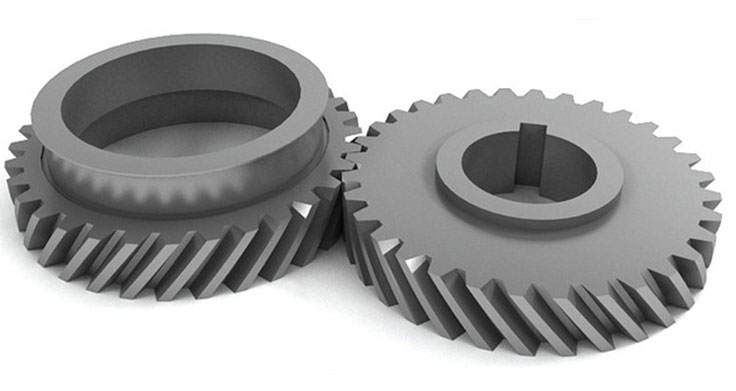
Helical gears are renowned for their ability to reduce noise during motion, making them an attractive choice in applications where quiet operation is crucial. The helical tooth profile and smooth engagement of helical gears contribute significantly to noise reduction, improving overall performance. Here’s how helical gears quietly improve performance by reducing noise:
1. Gradual Tooth Engagement:
Helical gears feature a helix angle that results in gradual tooth engagement as the gears mesh. Unlike spur gears with sudden, direct contact, helical gears allow the teeth to engage gradually, reducing impact and noise during the meshing process.
2. Reduced Vibration:
The smooth meshing action of helical gears also leads to reduced vibration. With less impact during engagement, there are fewer vibrations generated, contributing to a quieter and more stable operation.
3. Multiple Tooth Contact:
Helical gears have several teeth in simultaneous contact, spreading the load across multiple teeth. This multi-tooth engagement helps distribute the load more evenly, minimizing pressure and noise on individual teeth.
4. Lower Harmonics:
Harmonics, or resonance frequencies, can cause gear noise in some gear types. Helical gears typically exhibit lower harmonic frequencies due to their helical tooth profile, resulting in quieter operation.
5. Pressure Angle and Tooth Profile Modification:
The choice of pressure angle and possible tooth profile modifications can further enhance noise reduction. Profile modifications, such as crowning or tip relief, can help minimize edge contact and avoid gear noise caused by edge-loading.
6. Lubrication:
Proper lubrication is essential for noise reduction in helical gears. Adequate lubrication reduces friction and wear, ensuring smoother gear operation and a quieter system.
7. Gear Design Optimization:
Engineers can optimize the design of helical gears to reduce noise based on the specific application requirements. This may involve selecting appropriate gear parameters and using gear analysis tools to assess potential noise issues.
8. Quality Manufacturing:
High-quality manufacturing processes ensure that the gear teeth are precisely cut and finished. Proper gear machining and heat treatment contribute to noise reduction and gear performance.
9. Herringbone Gears:
Herringbone gears, a variation of helical gears with two opposing helix angles, provide additional noise reduction benefits. The opposing helices cancel out axial thrust forces, leading to quieter operation.
10. Applications with Noise Constraints:
Helical gears are commonly used in applications where noise reduction is critical, such as consumer appliances, medical equipment, office machinery, and automotive transmissions. In these applications, helical gears contribute to a more pleasant user experience and quieter working environments.
By reducing noise and vibration, helical gears enhance overall performance, making them suitable for various precision machinery, automation systems, and applications where noise control is essential. Their combination of smooth engagement, load-carrying capacity, and noise reduction qualities positions helical gears as a versatile and efficient choice in the design and implementation of mechanical systems.
